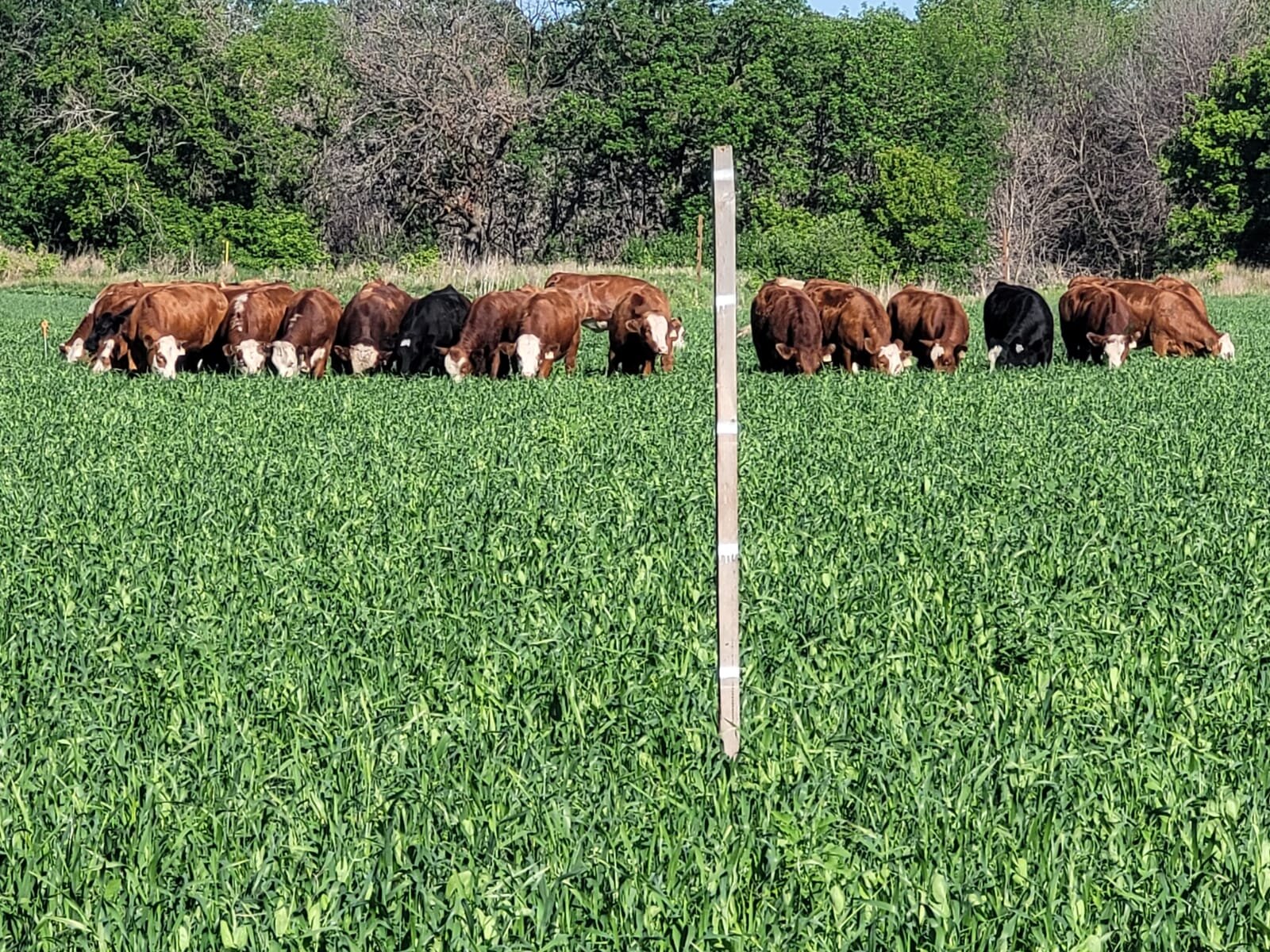Grain & Cattle Farm Collaboration
Connecting Farmers To Soil Health
Hello, Friends.
We hope this blog finds you well. With the food industry taking note of the regenerative agriculture movement, we thought it would be a good idea to highlight the initiative that a cattle producer & a grain producer have taken in 2021 to align with the vision of these companies:
McCains. Click Here To Learn More
General Mills. Click Here To Learn More
Cargill. Click Here To Learn More
The Full Season Cover was developed to utilize plant diversity, root exudates & soil biology to mimic the natural ruminant grazing systems. Keep in mind, the productive soils we farm today weren’t built by monocultures, heavy tillage & synthetic fertilizer but by ruminant animals, mob grazing diverse grasslands.
The collaboration
The Background
The Grain Farm: Hespler Farms. Winkler, Mb
The Cattle Farm: Peter & Derek Penner. Winkler, Mb
The benefit to the grain farmer? Use plant diversity and animal integration to stimulate soil biology & reduce dependency on synthetic inputs going forward.
The benefit to the cattle farmer? Balanced (energy + protein) high-quality grazing for livestock.
Image: Yearly heifers grazing Full Season Cover.
Full Season Cover
Establishment
Sown: May 1st, 2021
Comments: Good even emergence under dry conditions. Avoided spring frost. No fertilizer was applied. No pre-burn herbicide. (land is being transitioned to organic production)
Image: Full Season Cover Germination (10 days)
Full Season Cover
Early Vegetation
Extremely dry and cool conditions early on made for slow establishment (left picture). However, once a rain event occurred, the crop hit what is known as symbiosis.
What is symbiosis? This is when plants & soil are working symbiotically together through the mycorrhizal fungal network. Rapid growth and biomass accumulation will be the result.
Image: 14 day + rain difference
Full Season Cover
Mob Grazing protocol
The mob grazing protocol can be a bit unpredictable and you must make the decision for yourself. The trade-off goes as follows:
1. Turning the cows out earlier will result in smaller surface residue, but faster and more plentiful regrowth.
2. Turning the cows out when the crop is more mature will result in greater surface biomass, but much less regrowth.
Rotational grazing will always achieve the most desired results, and the more pounds per acre of live animal you can run per paddock, the greater the positive impact you will have on your soil.
• We would recommend making moves every 2-3 days (more frequent if possible)
• We would like to run a minimum of 20,000 Ibs/acre (15-20 cows/ac/day) stocking density in order for animals to create a vegetative residue on the soil surface.
Once the crop reaches symbiosis, the crop will grow rapidly. It is wise to turn the cows out earlier than later, to try and stay ahead of the rapid regrowth.
Image: Grazing/paddock plan. Peter’s plan is to rotate 35 yearling heifers on 2.5 acre paddocks, every 3 days.
Image: 1st day grazing the Full Season Cover. Animals will leave less residue when plants are small but will rebound with more vigour than a mature plant.
Image: 13 days after the beginning of grazing
3 days off of 2.68 acres leaving desirable residue behind to protect soil & feed biology.
The future of agriculture?
By collaborating a grain farms assets (land) with cattle farms assets (livestock) we can increase profitability while improving soil function, reducing soil erosion, synthetic input costs and risk all while producing a product (beef & potatoes) that food companies and consumers are now demanding.
Be sure to check back this fall/winter where we will be hosting a Farm Panel Discussion of other grain & cattle farms across Western Canada who are collaborating in this way.
With Gratitude,
Covers & Co. Team
Joseph Gardiner, Travis Avery, Mark Fallis, Owen Taylor






